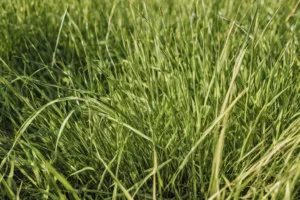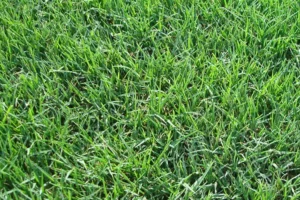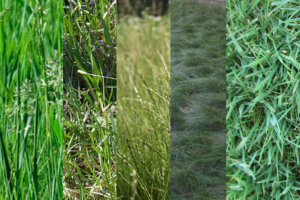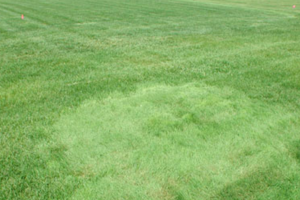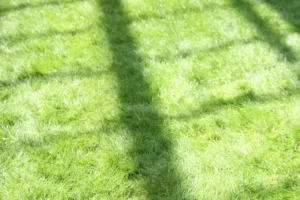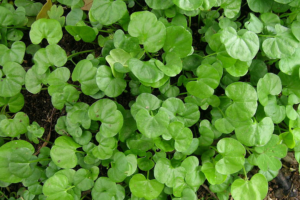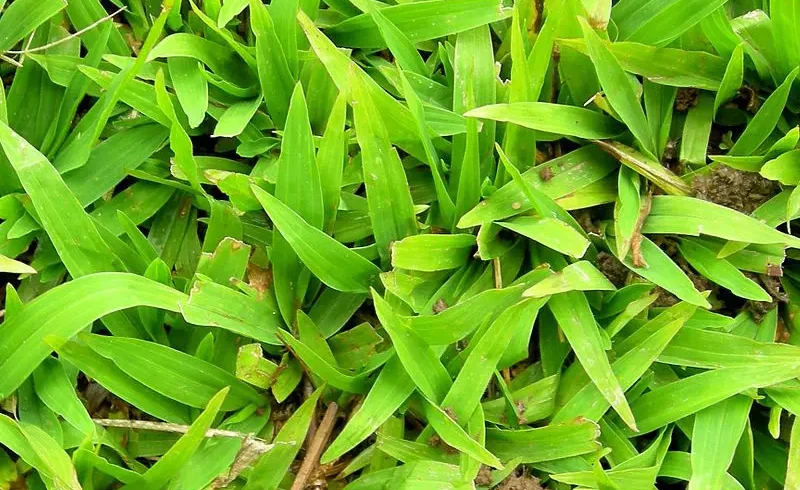
Carpet grass, scientifically known as Axonopus affinis, is a warm-season perennial grass native to the tropical and subtropical regions of the world. It is a popular choice for lawns and pastures due to its ability to thrive in less-than-ideal conditions. Carpet grass is known for its dense growth, forming a thick, carpet-like turf, hence the name. It is particularly favored for its ability to grow in low, wet soils where other grasses may struggle to establish.
This grass species is characterized by its light green color, coarse texture, and wide, flat leaf blades. It is often mistaken for other grass types due to its similar appearance, but it stands out for its low maintenance requirements and resilience. Carpet grass can tolerate shade, flooding, and poor soil quality, making it a versatile choice for various landscapes. In the following sections, we will delve deeper into carpet grass’s characteristics, benefits, and uses, providing a comprehensive guide for homeowners and landscapers alike.
Importance of Carpet Grass
Carpet grass is significant in turf management due to its unique attributes. Its ability to thrive in conditions challenging for other grass species makes it valuable for maintaining green spaces in diverse environments. Whether it’s a home lawn, a public park, or a sports field, carpet grass can adapt and provide a lush, green surface that is pleasing to the eye and functional for various activities.
Beyond its aesthetic appeal, carpet grass offers several environmental benefits. Its dense growth helps prevent soil erosion, particularly in areas prone to flooding or heavy rainfall. The thick turf it forms also suppresses weed growth, reducing the need for chemical weed control methods. Furthermore, carpet grass is an excellent choice for improving soil structure in areas with poor soil quality. As we delve deeper into the world of carpet grass in the subsequent sections, we will explore these benefits and more, highlighting why carpet grass is a worthy consideration for your landscaping needs.
Understanding Carpet Grass
Definition and Characteristics of Carpet Grass
Carpet grass, belonging to the genus Axonopus and the family Poaceae, is perennial grass known for its robust and hardy nature. It is characterized by its flat, broad leaves and pale green color. The grass forms a dense mat-like coverage, similar to a carpet, which is how it got its name. Its shallow root system allows it to establish and spread in suitable conditions quickly.
One of the critical characteristics of carpet grass is its ability to thrive in unfavorable conditions for many other types of grass. It can grow well in poorly drained, saturated soils and tolerate moderate shade. It is also resistant to many common lawn pests and diseases. However, it’s worth noting that carpet grass prefers acidic soils and may struggle in alkaline conditions.
Different Types of Carpet Grass
There are several types of carpet grass, each with its unique characteristics. The most common types include Common Carpet Grass (Axonopus affinis), Broadleaf Carpet Grass (Axonopus compressus), and Thin Paspalum (Paspalum setaceum).
Common Carpet Grass is the most widely used variety. It is highly adaptable and can grow in various soil types, including sandy, clay, and loamy soils. As the name suggests, Broadleaf Carpet Grass has broader leaves and is often used in lawns and golf courses. Thin Paspalum, while not an actual carpet grass, is often grouped with them due to its similar growth habit and appearance.
Regions Where Carpet Grass is Commonly Found
Carpet grass is native to the tropical and subtropical regions of the world. It is commonly found in the Southern United States, Central, and South America, and parts of Africa and Asia. In the United States, it is particularly prevalent in states like Florida, Louisiana, and Texas, where the warm, humid climate provides ideal growing conditions.
However, its adaptability allows carpet grass to be grown in many other regions. It is often used in poor drainage areas where other grass species need help. Whether it’s a low-lying area prone to flooding or a shady spot under a tree, carpet grass can provide a lush, green coverage where other grasses can’t.
Benefits of Carpet Grass
Environmental Benefits
Carpet grass offers several environmental benefits that make it a sustainable choice for landscaping. Its dense growth habit helps prevent soil erosion, a common problem in areas with heavy rainfall or flooding. By holding the soil together with its roots, carpet grass can help maintain the landscape’s integrity and protect against water pollution caused by runoff.
In addition, carpet grass is an excellent weed suppressor. Its thick turf leaves little room for growing weeds, reducing the need for chemical weed killers. This not only makes lawn maintenance easier but also contributes to a healthier environment by reducing the use of harmful chemicals.
Aesthetic Benefits
From an aesthetic perspective, carpet grass creates a lush, green lawn. Its dense, carpet-like growth provides a uniform look pleasing to the eye. The light green color of the grass adds a vibrant touch to the landscape, enhancing the property’s overall curb appeal.
Moreover, carpet grass can grow in shady areas where other grasses might struggle, allowing for a consistent look across the lawn. Whether under a tree or beside a building, carpet grass can maintain its lush appearance, ensuring that every part of your lawn looks its best.
Health Benefits
While often overlooked, the health benefits of carpet grass should be considered. Like other plants, carpet grass absorbs carbon dioxide and releases oxygen, producing cleaner, healthier air. This can be particularly beneficial in urban areas, where air pollution is a common concern.
Furthermore, the dense growth of carpet grass provides a soft, cushiony surface ideal for outdoor activities. Whether you enjoy playing sports, doing yoga, or simply relaxing in your backyard, carpet grass can provide a comfortable and safe surface. Its ability to withstand heavy foot traffic makes it a popular choice for public parks and sports fields.
Growing Carpet Grass
Ideal Conditions for Growing Carpet Grass
Carpet grass thrives in warm, humid climates and prefers full sun to partial shade. It is particularly well-suited to areas with poor drainage or waterlogged soils, where other grass types may need help. While it can tolerate a range of soil types, carpet grass prefers slightly acidic soils with a pH between 5.0 and 6.5.
Temperature-wise, carpet grass does best in areas where the average daily temperature is between 75 and 90 degrees Fahrenheit. It can tolerate cooler temperatures but may go dormant if it drops below 50 degrees Fahrenheit. Despite its hardiness, carpet grass is not frost-tolerant and may struggle in regions with cold winters.
Step-by-Step Guide on How to Plant Carpet Grass
Carpet grass, known for its ability to thrive in less-than-ideal conditions, is a popular lawn choice. It’s especially well-suited for wet, low-fertility soils where other grasses may struggle. Here’s a step-by-step guide on how to plant carpet grass.
Soil Preparation
The first step in planting carpet grass is preparing the soil. You can start by removing any existing grass or weeds from where you plan to plant the carpet grass. This can be done manually or with the help of a sod cutter. Once the area is clear, it’s time to improve the soil.
Carpet grass prefers acidic soil with a pH between 5 and 6.5. If your soil is too alkaline, add sulfur to lower the pH. On the other hand, if your soil is too acidic, you can add lime to raise the pH. Adding organic matter, such as compost or well-rotted manure, is also an excellent way to improve soil fertility and drainage.
Sowing the Seeds
Once the soil is prepared, it’s time to sow the carpet grass seeds. Spread the seeds evenly over the prepared soil at a rate of about one pound per 1000 square feet. You can use a hand or mechanical spreader to ensure even distribution. After sowing, lightly rake the area to cover the seeds with a thin layer of soil.
It’s important to sow carpet grass seeds in the right season. The best time to plant carpet grass is in the late spring or early summer when soil temperatures are between 70 and 90 degrees Fahrenheit. This gives the grass plenty of time to establish before the cooler months.
Watering
After sowing the seeds, the next step is watering. Water the area thoroughly right after planting to help the seeds germinate. Keep the soil consistently moist for the first few weeks but not waterlogged. You can reduce watering once the grass starts to grow.
Carpet grass is relatively drought-tolerant compared to other grass species. However, for the best results, it’s recommended to provide the grass with 1 to 1.5 inches of water per week, either from rainfall or irrigation. This will help the grass develop a deep root system and thrive.
Mowing
Once your carpet grass has been established, regular mowing will help it maintain a neat appearance. Carpet grass should be mowed to a height of about 1 to 2 inches. Mowing at this height will help the grass spread and fill in any bare spots, creating a dense, carpet-like lawn.
Remember to keep your mower blades sharp. Dull blades can tear the grass, leaving it with jagged edges that can turn brown. Also, it’s best to mow when the grass is dry, as wet grass can clump and cause uneven mowing. Following these mowing practices will help your carpet grass lawn look its best.
Common Challenges and Solutions When Growing Carpet Grass
Like any plant, carpet grass can face particular challenges. One common issue is nutrient deficiency, particularly in poor soils. This can be addressed by applying a balanced fertilizer as needed.
Pests and diseases can also affect carpet grass. Common pests include grubs and sod webworms, while diseases may include leaf and dollar spots. Regular monitoring can help detect these issues early, and appropriate treatments can be applied.
Despite these potential challenges, carpet grass is generally easy to grow and maintain, making it an excellent choice for novice and experienced gardeners.
Maintenance of Carpet Grass
Regular Care and Watering
Carpet grass is relatively low-maintenance compared to many other lawn grasses. It requires less frequent mowing due to its slower growth rate. Typically, mowing every 2-3 weeks during the growing season is sufficient to keep the lawn looking neat. The recommended mowing height for carpet grass is about 1-2 inches.
In terms of watering, carpet grass is relatively drought-tolerant once established. Regular watering is essential during the establishment phase, but once the grass is mature, it can usually survive with natural rainfall in most regions. Watering once a week should be sufficient during dry periods to keep the grass healthy.
Mowing and Trimming Techniques
When mowing carpet grass, keeping your mower’s blades sharp is essential. Dull blades can tear the grass, leaving it with jagged edges that can make the lawn look brown and increase its susceptibility to pests and diseases. The mowing height should be set to about 1-2 inches to maintain the health and appearance of the lawn.
Trimming around the edges of the lawn can help maintain a neat appearance. This can be done with a string trimmer or edger. Be careful not to trim the grass too short, which can stress the grass and lead to brown spots.
Dealing with Pests and Diseases
While carpet grass resists many common lawn pests and diseases, specific problems can still affect it. Common pests include grubs and sod webworms, while diseases may include leaf and dollar spots. Regular monitoring can help detect these issues early, and appropriate treatments can be applied.
If you notice brown spots or patches in your lawn, it could signify a pest or disease problem. You can consult a lawn care professional or your local extension service for advice on diagnosis and treatment. With proper care and maintenance, carpet grass can provide a lush, green lawn that is beautiful and durable.
Uses of Carpet Grass
Residential Uses
Carpet grass is a popular choice for residential lawns due to its low maintenance requirements and ability to thrive in various conditions. Its dense, carpet-like growth provides a lush, green surface that is aesthetically pleasing and functional for outdoor activities. Whether it’s a backyard for children to play, a front lawn to enhance curb appeal, or a shady area under trees, carpet grass can provide a beautiful and durable lawn in various residential settings.
In addition to lawns, carpet grass can be used in other home landscape areas. It can be used as a ground cover in areas where other plants struggle to grow, such as slopes or wet areas. It can also create a soft, cushiony surface in play areas or outdoor living spaces.
Commercial Uses
In commercial settings, carpet grass is often used for its hardiness and low maintenance requirements. It’s a common choice for public parks, sports fields, golf courses, and other recreational areas. Its ability to withstand heavy foot traffic and grow in less-than-ideal conditions makes it a practical choice for these high-use areas.
Carpet grass is also used in commercial landscapes to enhance the appearance of businesses and public buildings. Its lush, green growth can add a touch of nature to urban environments and create a pleasant and welcoming atmosphere.
Recreational Uses (Parks, Sports Fields, etc.)
Carpet grass is popular for recreational areas due to its durability and comfort. Its dense growth provides a soft, cushiony surface that is ideal for a variety of outdoor activities. From soccer fields and golf courses to public parks and playgrounds, carpet grass can withstand heavy use and maintain its lush, green appearance.
In addition to its practical benefits, carpet grass contributes to recreational areas’ aesthetic appeal. Its vibrant green color and carpet-like growth can enhance the beauty of parks and sports fields, making them more enjoyable for users. Whether it’s a community park, a school sports field, or a professional golf course, carpet grass can provide a durable and attractive surface for all kinds of recreational activities.
Comparing Carpet Grass with Other Types of Grass
Carpet Grass vs. Bermuda Grass
Carpet grass and Bermuda grass are popular lawn choices but have distinct characteristics. Bermuda grass is known for its fine texture and aggressive growth, making it an excellent choice for high-traffic areas. It also has a high tolerance for heat and drought, making it suitable for arid regions.
On the other hand, carpet grass is better suited for wet, poorly drained areas where Bermuda grass might struggle. It also has a coarser texture and slower growth rate, making lawn maintenance easier. However, carpet grass is less tolerant of heavy foot traffic than Bermuda grass.
Carpet Grass vs. St. Augustine Grass
St. Augustine grass is another warm-season grass often compared with carpet grass. It is known for its broad, flat blades and deep green color, making it a visually appealing choice for lawns. St. Augustine grass also has a high tolerance for shade and can grow well in various soil types.
Carpet grass tolerates shade and is better adapted to wet, acidic soils. It also has a lighter green color and a coarser texture than St. Augustine grass. While both types of grass can make excellent lawns, the best choice will depend on your specific conditions and preferences.
Carpet Grass vs. Zoysia Grass
Zoysia grass is a warm-season grass known for its fine texture and a high tolerance for drought and foot traffic. It can create a dense, carpet-like lawn resistant to weeds and diseases. However, Zoysia grass requires much sunlight and could perform better in shaded areas.
In contrast, carpet grass can tolerate moderate shade and is better suited for wet, poorly drained areas. It also has a coarser texture and a lighter green color than Zoysia grass. While Zoysia grass may be preferred for high-traffic, sunny areas, carpet grass can be a better option for shady, wet locations.
Is Carpet Grass Good for Lawns?
Yes, carpet grass can be an excellent choice for lawns, particularly in areas with challenging conditions. Its ability to grow in poor, saturated soils and tolerate moderate shade makes it versatile for various landscapes. This grass’s dense, carpet-like growth provides a lush, green surface that is aesthetically pleasing and functional for outdoor activities.
However, it’s important to note that carpet grass may not be the best choice for all situations. It prefers warm, humid climates and may struggle in regions with cold winters. It also has a coarser texture than some other lawn grasses, which some homeowners may not prefer. But carpet grass can be an excellent option for those looking for low-maintenance, hardy grass that can thrive in less-than-ideal conditions.
How Often Should Carpet Grass Be Watered?
The watering needs of carpet grass can vary depending on the specific conditions, but generally, it requires less water than many other lawn grasses. Once established, carpet grass is relatively drought-tolerant and can survive with infrequent watering.
However, keeping the soil consistently moist during the establishment phase is essential to encourage seed germination and root growth. This usually means watering the lawn daily or every other day for the first few weeks after planting. Once the grass is established, watering can be reduced to once a week or less, depending on the weather conditions.
Can Carpet Grass Grow in the Shade?
One of the advantages of carpet grass is its ability to tolerate moderate shade. While it prefers full sun, it can still grow in areas with less sunlight, such as under trees or beside buildings. This makes carpet grass a good choice for landscapes with varying light conditions, as it can provide consistent, green coverage across the entire lawn.
However, it’s worth noting that while carpet grass can tolerate shade, its growth may be less vigorous in heavily shaded areas compared to areas that receive full sun. If the area is too shady, consider other shade-tolerant grasses or ground covers.
Conclusion
Carpet grass has proven to be a versatile and resilient choice for lawns in various regions, particularly those with challenging conditions such as poor drainage or shade. Its ability to thrive where other grasses may struggle and its low maintenance requirements make it a valuable asset for homeowners and landscapers.
Throughout this article, we’ve explored carpet grass’s characteristics, benefits, and uses, highlighting its adaptability and resilience. From its environmental benefits, such as preventing soil erosion and suppressing weed growth, to its aesthetic appeal and health benefits, carpet grass offers many advantages that make it a worthy consideration for your lawn.
If you’re looking for hardy, low-maintenance grass for your lawn, carpet grass could be an excellent choice. Its ability to grow in less-than-ideal conditions and dense, carpet-like growth make it a practical and attractive option for various landscapes.
Whether you’re a homeowner looking to improve your lawn, a landscaper seeking versatile options for your clients, or simply a gardening enthusiast interested in learning about different types of grass, we hope this guide has provided valuable insights into the world of carpet grass. We encourage you to consider carpet grass for your lawn and experience its benefits firsthand. We hope this comprehensive guide has provided valuable insights into carpet grass and its many benefits. If you’ve already used carpet grass on your lawn or are considering it, we’d love to hear about your experiences. Sharing your stories can provide valuable insights for others considering carpet grass for their lawns.
Please don’t hesitate to comment below or contact us directly with your experiences, questions, or suggestions. Your feedback helps us improve our content and creates a community of readers who can learn from each other’s experiences.

Bob Green, a passionate lawn care enthusiast with over two decades of landscaping experience, is this website’s proud owner. His vast knowledge of horticulture and dedication to helping homeowners maintain beautiful lawns are reflected in the valuable content he shares on his platform. John has always been interested in Agrostology.









